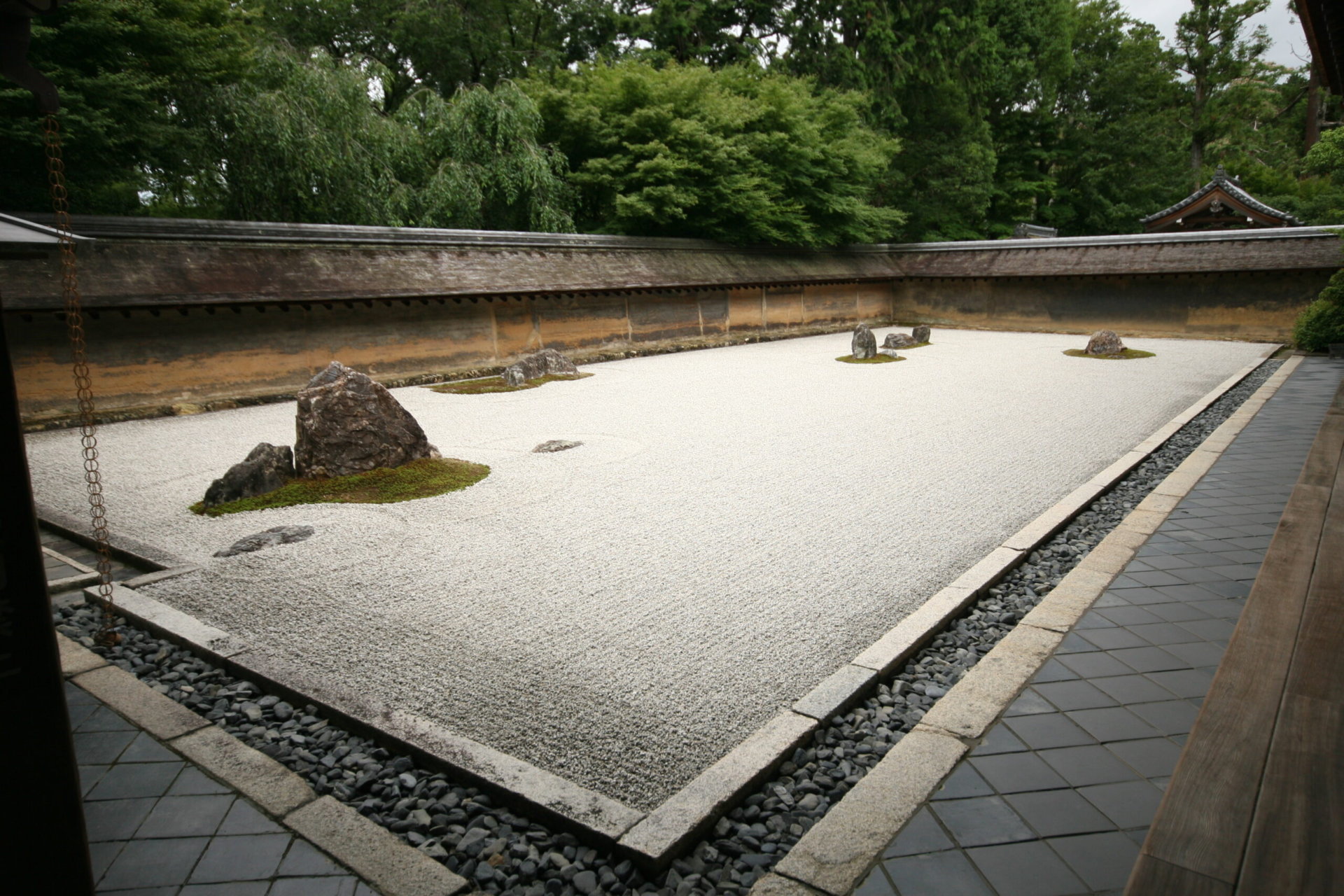While there are many historical Japanese gardens in Tokyo and Kyoto in Japan, there are also many in Shimane Prefecture. Matsue City and Izumo City, in particular, are known for their unique regional Japanese gardens.
The Japanese garden is not only beautiful to look at and fascinating to behold in its profundity, but everything about the Japanese garden is imbued with deep meaning.
One of the most commonly used is gravel. The significance of gravel in Japanese gardens can be divided into several categories.
It means oceans, rivers and clouds.
The most common meaning of gravel in Japanese gardens is when it means the sea or a river. In other words, it means water.
The flow of water is expressed in easy-to-understand patterns of gravel, with rough gravel upstream and fine gravel downstream.
There are two types of Japanese gardens: pond gardens, which use water, and dry landscape gardens, which do not use water. In dry landscape gardens, gravel is used to represent water.
The use of gravel is also clever, and the expression of water, such as rough ocean waves and calm conditions, is skillfully expressed using gravel.

The photo shows the Zuihouin Garden. The standing stones at the back of the garden signify the legendary Horai Island, where a hermit is making medicinal herbs for immortality. Therefore, in order to signify that it is inaccessible to humans, the gravel is undulated greatly to represent the wild and inaccessible sea.
It may also be raging clouds. It means the top of a mountain is poking out of the clouds.
It means the abstract world.
Many Japanese gardens are strongly influenced by Buddhist and other philosophies. The depicted ideas of the campus called a garden may represent an abstract world, such as gravel as meaning heaven or the afterlife.

The photo shows the garden at Ryugenin, the pagoda of Daitokuji Temple, which is said to be the smallest stone garden in Japan. The gravel in this garden has round ripples that represent a drop of water dripping down, signifying the importance of a single drop of water as it becomes a stream, then a large river, and finally an ocean.
If the gravel represents a thought, it is difficult to know its meaning at a glance.
Many have explanatory notes nearby describing the meaning or a guide will explain it to you, so it is best to ask questions and listen.
It means as much to the viewer as it does to the viewer.
Today, there are many gardens whose meaning is not clearly known.
Gardens built in the olden days had no author, of course, and the owners who inherited them from generation to generation have no way of knowing their true meaning if they have not heard it passed down from generation to generation.

The photo shows Ryoanji Temple in Kyoto, Japan, a very famous garden known for its stone garden made of 15 stones. However, there are 100 different meanings of this garden, and the correct answer is not known.
It is safe to say that these gardens have as much meaning as the number of people who see them. It is the quintessential Japanese garden that looks different depending on the way one looks at it from the heart.
Gravel in Japanese gardens is very often used as the perfect entity for various expressions because it can be freely shaped. However, its meanings vary from easy to understand to those that cannot be understood without explanation.
In fact, there are many gardens whose meanings are still not clearly defined. However, one of the deepest aspects of Japanese gardens is that the viewer is free to consider the connotations. Let’s think about the meaning of gravel and enjoy viewing gardens.


